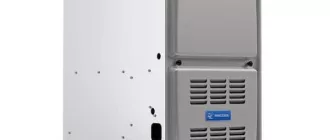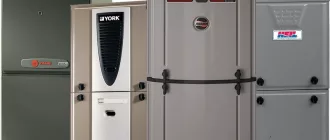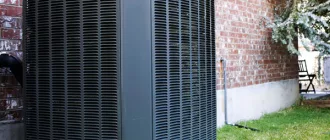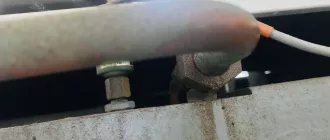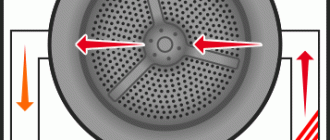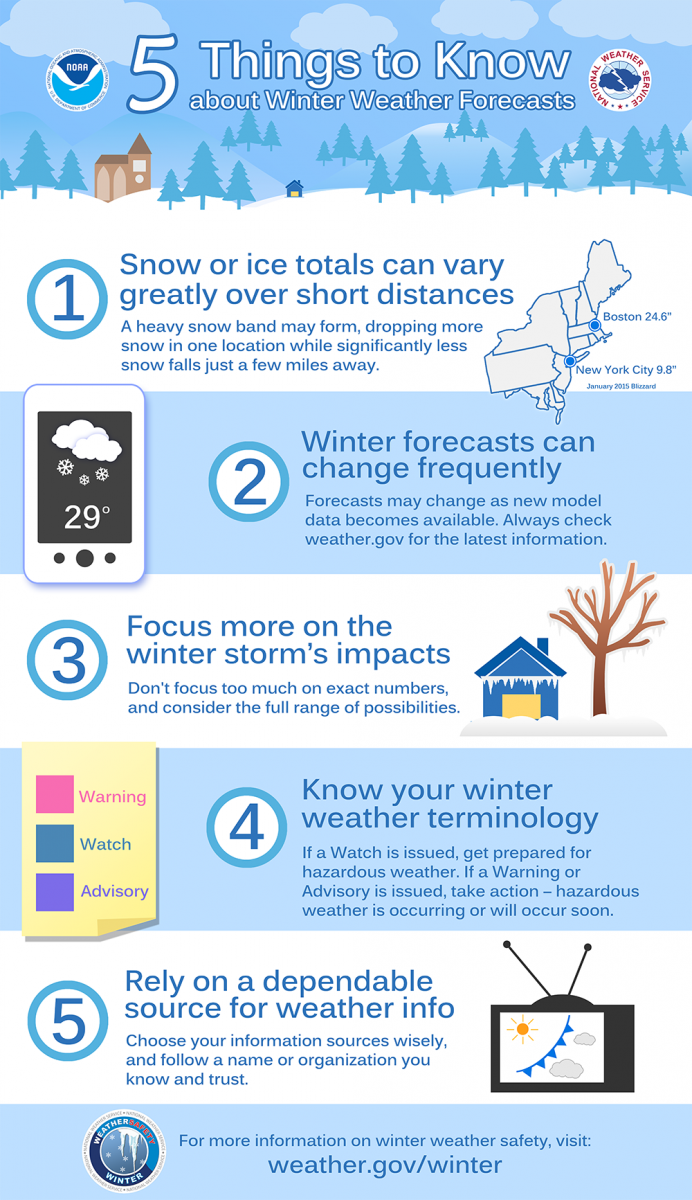
Ten Essential Tips for Winterizing Your Home and Keeping it Cozy and Energy Efficient
Winter is just around the corner, and it’s time to start preparing your home for the chilly months ahead. By taking a few simple steps now, you can ensure that your home stays warm and cozy throughout the winter season. We’ve compiled a list of ten essential tips to help you get started.
1. Insulate your home: Insulation is key to keeping the cold air out and the warm air in. Check for any gaps or cracks around windows, doors, and vents, and seal them with weatherstripping or caulk. This will not only help to keep your home warm, but it will also save you money on heating bills.
2. Service your heating system: Before the winter sets in, it’s important to have your heating system serviced by a professional. They will clean and inspect your furnace or boiler, ensuring that it is running efficiently and safely. This will help to prevent any breakdowns or costly repairs during the colder months.
3. Clean your gutters: This is an often overlooked task, but it is essential for preventing ice dams and water damage. Clear out any leaves or debris from your gutters and downspouts to ensure that water can flow freely. Consider installing gutter guards to make maintenance easier in the future.
4. Check your insulation: In addition to insulating your home’s structure, it’s also important to check insulation in attics, basements, and crawl spaces. Proper insulation will not only keep your home warmer, but it will also help to prevent frozen pipes and reduce the risk of moisture damage.
5. Test your smoke and carbon monoxide detectors: With the increased use of heaters and fireplaces during the winter, it’s crucial to ensure that your smoke and carbon monoxide detectors are working properly. Test them regularly and replace any batteries as needed.
6. Protect your outdoor faucets: To prevent them from freezing and bursting, it’s essential to disconnect and drain your outdoor faucets before the first freeze. Install faucet covers to provide additional insulation and keep them protected throughout the winter season.
7. Trim your trees: Winter storms can cause branches to break and damage your home or property. Before the winter arrives, trim any overhanging branches and remove any dead or weak trees. This will help to prevent potential accidents and costly repairs.
8. Stock up on winter supplies: Make sure you have an adequate supply of winter essentials, such as salt or sand for de-icing walkways, a snow shovel, and extra blankets. It’s better to be prepared in advance than to scramble during a winter storm.
9. Inspect your roof: Check your roof for any loose or damaged shingles, as they can easily be blown off by strong winds or heavy snow. Repair any issues before winter arrives to prevent leaks and water damage.
10. Create an emergency kit: Lastly, prepare an emergency kit in case of power outages or extreme weather conditions. Include essentials such as flashlights, batteries, non-perishable food, and blankets. It’s always better to be safe than sorry.
Insulate Your Windows
As you prepare your home for winter, it’s important to pay attention to your windows. Windows can be a major source of heat loss, causing your heating system to work harder and resulting in higher energy bills. To combat this, use these quick tips to insulate your windows:
1. Weatherstripping: Apply weatherstripping around the window frame to create a seal and prevent air leakage. This can be done using adhesive strips or caulk.
2. Window Film: Apply window film to create an extra barrier against drafty windows. Window film is a clear, insulating material that can be easily installed and removed.
3. Insulated Curtains or Blinds: Install insulated curtains or blinds to provide an extra layer of insulation. These can help to trap heat inside your home and keep cold drafts out.
4. Draft Stoppers: Place draft stoppers at the bottom of your windows to prevent cold air from seeping in. These can be made from fabric or purchased pre-made.
5. Window Insulation Kits: Consider using window insulation kits, which include plastic film and double-sided tape. These kits are an affordable option and can significantly reduce heat loss.
6. Caulking: Check for any gaps or cracks around your windows and apply caulk to seal them. This will help to prevent air leakage and keep your home insulated.
7. Window Seals: Check the condition of your window seals and replace any that are damaged or worn. Proper window seals are essential for maintaining insulation.
8. Use Draft Stoppers: Use draft stoppers to prevent cold air from seeping in. These can be placed at the bottom of your windows to create a barrier against drafts.
9. Install Window Insulation Film: Consider installing window insulation film to create an extra layer of insulation. This film is transparent and can be easily applied to the inside of your windows.
10. Double-glazed Windows: If your budget allows, consider upgrading to double-glazed windows. These windows have two layers of glass with a layer of insulating gas in between, providing optimal insulation.
By following these tips, you can effectively insulate your windows and keep your home cozy during the winter months.
Check for Drafts
Before winter arrives, it is important to prepare your home and ensure it is well sealed against drafts. Drafts can lead to a colder home and higher heating costs.
Here are ten tips to help you check for drafts and keep your home cozy during the winter:
| 1 | Inspect windows and doors for any noticeable gaps or cracks. Use caulk or weatherstripping to seal these areas. |
| 2 | Check for drafts around electrical outlets and switch plates. Use foam gaskets to seal these areas. |
| 3 | Inspect the attic for any openings or leaks. Use insulation to seal these areas and prevent heat loss. |
| 4 | Look for drafts around pipes and vents. Use insulation or expandable foam to seal these areas. |
| 5 | Check the basement or crawl space for any openings or cracks. Use caulking or foam insulation to seal these areas. |
| 6 | Inspect the chimney and fireplace for any gaps or cracks. Use fireplace draft stoppers or chimney caps to minimize heat loss. |
| 7 | Check for drafts around recessed lighting fixtures. Use insulation or draft stoppers to seal these areas. |
| 8 | Look for drafts around the foundation of the house. Use foam insulation or caulk to seal any gaps or cracks. |
| 9 | Inspect the garage for any gaps or cracks. Use weatherstripping or insulation to seal these areas. |
| 10 | Consider installing storm windows or using window film to further insulate your home and reduce drafts. |
By taking the time to check for drafts and seal any openings, you can significantly improve the energy efficiency of your home and stay warm throughout the winter season.
Keep Gutters Clean
One quick and essential tip to prepare your home for winter is to keep your gutters clean. Clogged gutters can cause a lot of problems during the winter months.
During winter, snow and ice can accumulate in the gutters, leading to blockages and preventing proper drainage. This can result in water overflowing and seeping into your home, causing damage to the roof, walls, and foundation.
To prevent this, it is important to regularly clean your gutters and remove any leaves, debris, or ice buildup. This can be done using a ladder, gloves, and a garden hose to flush out any remaining debris.
Additionally, installing gutter guards can help keep leaves and other debris from clogging the gutters, making maintenance easier.
By keeping your gutters clean, you can ensure proper drainage and prevent potential damage to your home during the winter season.
Protect Your Pipes
When winter comes, it’s important to prepare your home in various ways. One important aspect of winter preparation is protecting your pipes. Freezing temperatures can cause pipes to burst, leading to water damage and expensive repairs. Here are ten quick tips to help you protect your pipes during the winter months:
| 1. | Insulate your pipes: Wrap them with insulation sleeves or use heat tape to prevent freezing. |
| 2. | Seal cracks and gaps: Check for any cracks or gaps in the walls, foundation, or windows where cold air can enter. Use caulk or weatherstripping to seal them. |
| 3. | Disconnect outdoor hoses: Drain and disconnect all outdoor hoses to prevent water from freezing inside them and causing damage to the connected pipes. |
| 4. | Let faucets drip: Turn on a slight trickle of water from faucets connected to vulnerable pipes to keep the water flowing and prevent freezing. |
| 5. | Open cabinet doors: Keep the cabinet doors under sinks open to allow warm air to circulate and reach the pipes. |
| 6. | Keep the heat on: Even if you’re leaving the house, set the thermostat to a reasonable temperature to keep the interior warm enough to prevent freezing pipes. |
| 7. | Insulate the attic: Properly insulate the attic to prevent cold air from entering the house and affecting the pipes. |
| 8. | Drain and winterize outdoor sprinklers: Before the first freeze, drain and winterize your outdoor sprinkler system to prevent damage to the pipes and valves. |
| 9. | Install frost-free hose bibs: Replace standard outdoor faucets with frost-free hose bibs, which are designed to prevent freezing and bursting. |
| 10. | Have a backup plan: In case of a burst pipe, know where the main water shutoff valve is and how to turn it off quickly to minimize water damage. |
By following these ten quick tips, you can better prepare your home and protect your pipes from the potential dangers of freezing temperatures during winter.
Seal Air Leaks
One of the most important steps you can take to prepare your home for winter is to seal any air leaks. Not only does this help keep your home warm and comfortable, but it can also save you money on energy costs. Here are ten quick tips to help you seal air leaks:
- Inspect your doors and windows: Check for any gaps or cracks around the frames. Use weatherstripping or caulking to seal any leaks.
- Seal your windows: If you have older, single-pane windows, consider applying a window film or using window insulator kits to improve insulation.
- Check your attic: Look for any gaps or holes in the attic insulation. Use spray foam or caulk to seal these areas.
- Seal your electrical outlets: Install foam gaskets behind outlet covers to prevent drafts.
- Insulate your pipes: Use pipe insulation to prevent freezing and reduce heat loss.
- Seal your fireplace: Close the damper when the fireplace is not in use to prevent warm air from escaping.
- Weatherize your basement: Use caulk or insulation to seal any cracks or gaps in the basement walls or foundation.
- Inspect your heating ducts: Look for any leaks or gaps in the ductwork. Use duct mastic or metal tape to seal these areas.
- Seal around your chimney: Use fire-resistant caulk or cement to seal any gaps between the chimney and the house.
- Use door sweeps: Install door sweeps on exterior doors to prevent drafts from entering your home.
By taking the time to seal air leaks in your home, you can ensure that it stays warm and energy-efficient throughout the winter season. The ten quick tips provided above will help you prepare your home for the cold weather and save money on heating costs.
Prepare Your Heating System
As winter approaches, it’s crucial to ensure that your home’s heating system is ready to keep you warm during the colder months. Here are ten quick tips to help you prepare your heating system for winter:
| 1. | Change your furnace filter. |
| 2. | Inspect your heating vents and ducts for any blockages or leaks. |
| 3. | Have your furnace professionally inspected and serviced. |
| 4. | Check your thermostat and make sure it’s working properly. |
| 5. | Bleed the air out of your radiator if it’s not heating up properly. |
| 6. | Insulate your heating pipes to prevent heat loss. |
| 7. | Consider installing a programmable thermostat to save energy. |
| 8. | Check for drafts around windows and doors and seal them if necessary. |
| 9. | Make sure your heating vents are not blocked by furniture or other obstructions. |
| 10. | Consider adding additional insulation to your home to improve energy efficiency. |
By following these ten quick tips, you can ensure that your heating system is in top shape and ready to keep your home warm and cozy throughout the winter season.
Clean and Inspect Chimneys
As the temperatures drop and you start using your fireplace, it’s essential to clean and inspect your chimneys. Over time, soot and creosote can build up in your chimney, which can be a fire hazard. Hiring a professional chimney sweep is a quick and easy way to ensure that your chimney is free from debris and safe to use.
During the inspection, the chimney sweep will look for any cracks, leaks, or damage that could lead to water seeping into your home. It’s important to fix any issues before winter to prevent water damage and expensive repairs in the future.
Additionally, the chimney sweep will check if your chimney cap and flue are in good condition. A damaged chimney cap can allow animals or debris to enter your chimney, while a damaged flue can cause smoke and harmful gases to enter your home. Repairing or replacing these components will help keep your home safe and warm during the winter months.
In conclusion, don’t neglect the importance of cleaning and inspecting your chimney before winter sets in. Taking these ten quick tips to prepare your home for winter will ensure that you can enjoy a cozy and safe environment throughout the season.
Stock Up on Fireplace Supplies
In preparation for winter, it’s important to ensure that your home is well-equipped to keep you warm. One essential step is to stock up on fireplace supplies. Having these supplies on hand will ensure that you are ready to enjoy a cozy and comforting fire when the temperature drops.
Here are ten quick tips to help you prepare your home for winter:
- Check your chimney: Before using your fireplace, make sure to check that your chimney is clean and in good condition. This will help prevent chimney fires and ensure optimal performance.
- Gather firewood: Stock up on dry and seasoned firewood. It’s best to store it in a covered area to protect it from moisture.
- Invest in a fire screen: A fire screen is a must-have to keep sparks and embers from flying out of the fireplace and causing accidents.
- Get fireplace tools: Essential tools like a poker, tongs, and a brush will come in handy for managing the fire and cleaning the fireplace.
- Have fire starters: Make sure to have fire starters, such as newspaper, kindling, or fire starter logs, to easily ignite your fire.
- Ensure proper ventilation: Make sure there is enough airflow in the room when the fireplace is in use, either through a chimney damper or by cracking open a window slightly.
- Keep a fire extinguisher nearby: Safety should always be a priority. Have a fire extinguisher nearby in case of emergencies.
- Consider a carbon monoxide detector: Fireplaces can produce carbon monoxide, so it’s wise to have a detector installed to ensure your safety.
- Inspect the fireplace grate: Check the fireplace grate for any damage and ensure that it is structurally sound.
- Keep the area around the fireplace clear: Remove any flammable items from the vicinity of the fireplace to minimize the risk of accidents.
By following these ten quick tips and stocking up on fireplace supplies, you’ll be well-prepared for a cozy and warm winter season in your home.
Protect Outdoor Plumbing
In winter, it’s important to take steps to protect your outdoor plumbing from freezing temperatures. Here are ten quick tips to help you prepare:
- Disconnect and drain outdoor hoses. Disconnect any hoses from outdoor faucets and drain them completely. Store them in a dry place to prevent damage.
- Insulate exposed pipes. Insulate any exposed pipes with pipe insulation or wrapping to protect them from freezing.
- Close outdoor faucets. Shut off the water supply to outdoor faucets and drain any remaining water. Leave the faucets open to allow any remaining water to escape.
- Seal cracks and gaps. Inspect the area around outdoor plumbing for any cracks or gaps and seal them with caulk or foam insulation to prevent cold air from entering.
- Install frost-proof faucets. Consider installing frost-proof faucets, which are designed to prevent freezing and bursting.
- Use heat tape. If you have pipes that are prone to freezing, consider using heat tape to keep them warm.
- Keep the heat on. Make sure to keep your home heated, even if you’re away, to prevent freezing temperatures inside and outside your home.
- Monitor the weather. Stay informed about upcoming weather conditions and take additional precautions if extremely cold temperatures are expected.
- Clear debris. Remove any leaves, branches, or other debris from around outdoor plumbing to ensure proper water flow and prevent blockages.
- Consider professional help. If you’re unsure how to properly protect your outdoor plumbing or suspect any issues, don’t hesitate to call a professional plumber for assistance.
By following these tips, you can help protect your outdoor plumbing from the harsh effects of winter and avoid costly repairs.
Check Your Roof
During the winter months, your roof is your home’s first line of defense against the harsh weather conditions. Here are ten quick tips to help you ensure that your roof is winter-ready:
1. Inspect for Damages: Check your roof for any signs of damage, such as missing or cracked shingles, leaks, or loose flashing.
2. Clean Your Gutters: Clear out any debris from your gutters to prevent water from backing up and causing damage to your roof.
3. Trim Overhanging Trees: Trim any branches that are hanging over your roof to prevent them from falling and causing damage during winter storms.
4. Check for Proper Ventilation: Ensure that your attic is properly ventilated to prevent the formation of ice dams on your roof.
5. Insulate Your Attic: Adequate insulation in your attic will help to keep your home warm and prevent heat from escaping through the roof, reducing the risk of ice dams.
6. Remove Snow: If you experience heavy snowfall, remove snow from your roof using a roof rake to prevent excessive weight and potential structural damage.
7. Repair Flashing: Check and repair any damaged or loose flashing around your roof, chimney, or vents to prevent leaks.
8. Inspect Attic for Leaks: Check your attic for any signs of water leaks, such as stains, dampness, or mold growth. Address any issues promptly.
9. Seal Cracks and Gaps: Seal any cracks or gaps in your roof or attic to prevent drafts and heat loss.
10. Schedule a Professional Inspection: It’s always a good idea to have a professional inspection of your roof before winter to identify any potential issues and make necessary repairs.
By following these tips, you can ensure that your roof is in good condition to withstand the challenges of winter and keep your home warm and protected.
Trim Trees and Shrubs
As part of your winter home preparation, consider trimming your trees and shrubs. This not only helps to maintain their overall appearance, but it also promotes healthy growth. Here are ten quick tips to help you get started:
- Inspect trees and shrubs for any damaged or dead branches. These should be pruned to prevent them from falling and causing damage during winter storms.
- Remove any branches or limbs that are close to power lines. This will help prevent power outages and potential hazards.
- Trim branches that are close to your home or other structures. This will minimize the risk of them causing damage in case of strong winds or heavy snowfall.
- Thin out dense areas of trees and shrubs to allow better airflow and sunlight penetration. This will reduce the risk of diseases and promote healthy growth.
- Shape your trees and shrubs to maintain their desired appearance. This will give your landscape a neat and polished look during the winter months.
- Prune any branches that are rubbing against each other or crossing over. This will prevent the growth of weak and vulnerable branches.
- Use proper pruning techniques to make clean cuts and avoid any unnecessary damage to the plants.
- Dispose of the trimmed branches and leaves properly. You can either compost them or dispose of them according to your local regulations.
- Consider consulting a professional arborist or tree trimmer if you have large or mature trees that require extensive pruning.
- Regularly monitor the growth of your trees and shrubs throughout the winter season and make any necessary adjustments or trims.
Following these ten tips will ensure that your trees and shrubs are well-prepared for the winter season, promoting their health and longevity while keeping your home safe from potential hazards.
Prepare Your Lawn and Garden
When preparing your home for winter, don’t forget about your lawn and garden. Taking a few quick actions can help ensure that they survive the harsh winter months and are ready to thrive when spring comes around.
Here are ten tips to get your lawn and garden ready for winter:
| 1. | Remove debris: | Clear your lawn and garden of any fallen leaves, branches, or other debris. This will prevent them from suffocating your grass and plants during the winter. |
| 2. | Mow the lawn: | Give your lawn one final trim before winter. This will help prevent it from becoming too long and susceptible to disease and pests. |
| 3. | Fertilize: | Apply a slow-release fertilizer to your lawn and garden. This will provide the nutrients they need to stay healthy during the winter months. |
| 4. | Aerate: | Consider aerating your lawn to alleviate soil compaction and promote better water and nutrient absorption. |
| 5. | Water: | Continue watering your lawn and garden until the ground freezes. This will help them stay hydrated and prepare for winter dormancy. |
| 6. | Prune: | Trim any dead or damaged branches from trees and shrubs. This will reduce the risk of them breaking under the weight of snow and ice. |
| 7. | Protect fragile plants: | Cover delicate plants with burlap or other protective material to shield them from harsh winter winds and frost. |
| 8. | Clean and store tools: | Thoroughly clean and dry your gardening tools before storing them for winter. This will help prevent rust and damage. |
| 9. | Winterize your irrigation system: | If you have an irrigation system, make sure to drain and winterize it to prevent frozen pipes and costly repairs in the spring. |
| 10. | Plan for spring: | Use the winter months to plan and prepare for your spring gardening. Research new plants, create a planting schedule, and order seeds or bulbs. |
By following these ten quick tips, you can ensure that your lawn and garden are well-prepared for winter and set up for a successful growing season when spring arrives.
Store Outdoor Furniture
When preparing your home for winter, don’t forget about your outdoor furniture. Properly storing your outdoor furniture can help prolong its life and protect it from damage during the harsh winter months. Here are ten quick tips to help you prepare and store your outdoor furniture:
| 1. | Clean: Thoroughly clean your outdoor furniture to remove any dirt or debris that could cause damage or attract pests during storage. |
| 2. | Protective Covers: Invest in high-quality protective covers to shield your furniture from rain, snow, and other winter elements. |
| 3. | Remove Cushions: Remove any cushions or fabric parts from the furniture and store them in a dry place indoors to prevent mold or mildew growth. |
| 4. | Disassemble: If possible, disassemble larger pieces of furniture to save space and make them easier to store. |
| 5. | Cover Metal Parts: Use rust-resistant spray or apply a protective coating to metal parts to prevent rust or corrosion. |
| 6. | Stack Chairs: Stack chairs together to save space and cover them with a tarp to keep them clean and dry. |
| 7. | Store in a Dry Place: Find a dry and sheltered location, such as a shed or garage, to store your furniture and protect it from moisture. |
| 8. | Elevate: If storing furniture outside, elevate it off the ground to prevent it from sitting in pooled water or snow. |
| 9. | Secure: Ensure that your furniture is securely stored to prevent it from being damaged or blown away by strong winds. |
| 10. | Regular Inspection: Periodically check on your stored furniture during winter to make sure it’s still in good condition and doesn’t require any maintenance. |
By following these tips, you can properly prepare your outdoor furniture for winter and ensure that it’s ready to use when warmer weather returns.
Prepare for Power Outages
Winter can bring unpredictable weather conditions that often result in power outages. To keep your home safe and comfortable during these times, it’s important to be prepared. Here are ten quick tips to help you get ready:
- Stock up on essentials: Make sure you have enough batteries, flashlights, and non-perishable food items to last for at least a couple of days.
- Keep warm: Have extra blankets, warm clothing, and portable heaters on hand in case your heating system fails.
- Invest in a backup generator: Consider purchasing a generator to provide power during outages. Make sure to follow safety guidelines and keep it properly maintained.
- Charge your devices: Keep your mobile phones, tablets, and other important devices fully charged. This way, you can stay connected and informed even during a power outage.
- Create an emergency kit: Pack an emergency kit with essential items like a first aid kit, a battery-operated radio, and extra medication if needed.
- Insulate your home: Seal any drafts or leaks in your windows and doors to keep the cold air out and the warm air in.
- Trim trees and branches: Remove any overhanging tree limbs that could potentially fall on power lines and cause outages or damage.
- Know your circuit breaker: Familiarize yourself with your home’s circuit breaker panel so that you know how to reset it in case of an outage.
- Check your smoke and carbon monoxide detectors: Ensure that your smoke and carbon monoxide detectors are working properly. These devices are especially important during winter when the risk of fire and carbon monoxide leaks increases.
- Stay informed: Sign up for emergency alerts in your area and stay updated on weather conditions and power outage notifications. This will help you take necessary precautions and plan accordingly.
By following these tips, you can ensure that you and your home are prepared for power outages during the winter months. Stay safe and stay warm!
Q&A:
How can I prepare my home for winter?
There are a few key things you can do to prepare your home for winter. First, make sure your heating system is in good working order by getting it serviced. Insulate your windows and doors to prevent drafts and heat loss. Clear your gutters of leaves and debris to avoid ice buildup. Stock up on winter supplies such as salt for de-icing, and make sure you have a backup generator in case of power outages. Finally, consider installing a programmable thermostat to help regulate the temperature and save on energy costs.
Why is it important to service my heating system before winter?
Servicing your heating system before winter is important for a few reasons. Firstly, it ensures that your system is in good working order and will be able to keep your home warm throughout the winter months. It also helps to identify any potential issues or repairs that may need to be addressed before they become major problems. Additionally, a well-maintained heating system is more energy-efficient, which can help to lower your heating costs.
What are some ways to insulate windows and doors?
There are several options for insulating windows and doors to prevent drafts and heat loss. One option is to use weatherstripping, which can be applied around the edges of windows and doors to create a seal. Another option is to use window film, which is a thin plastic film that can be applied to windowpanes to provide insulation. You can also use draft stoppers, which are long, narrow cushions that can be placed at the bottom of doors to keep out drafts. Finally, consider using thermal curtains or blinds to help keep warm air in and cold air out.
Why is it important to clear gutters before winter?
Clearing your gutters before winter is important because it helps to prevent ice buildup. When leaves and debris clog the gutters, water can’t flow freely, and it can freeze in the gutters and downspouts when temperatures drop. This can lead to ice dams, which can cause damage to your roof, gutters, and even the interior of your home. By keeping your gutters clear, you can help to prevent ice dams and ensure that water can flow freely away from your home.

